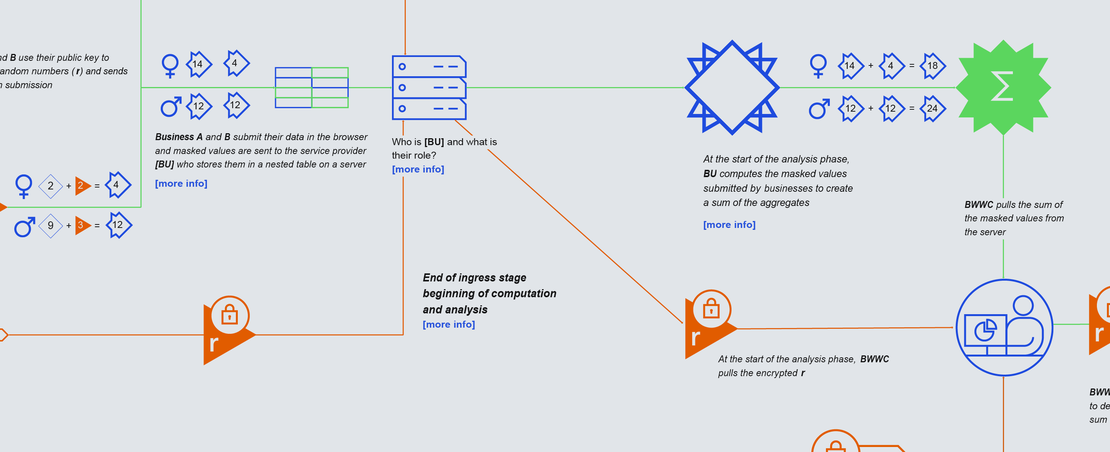
As part of the ongoing work at the ODI on privacy-enhancing technologies (PETs), we are working on a series of short explainers that provide a closer look at how certain PETs have been deployed in the real world. In these explainers, we have created interactive diagrams that walk you through the processes involved in the working of each example and a corresponding write-up that provides the context of the circumstances in which it was used. Together, these two items provide a practical walkthrough of why this PET was used, how it works in practice and the outcomes of its use.
In this particular explainer, we look at multi-party computation (MPC). MPC is a cryptographic protocol that enables individual stakeholders who hold sensitive data to pool it with others for joint computations without revealing the underlying data itself.
In this example, the Boston Women’s Workforce Council (BWWC) partnered with Boston University to use MPC to enable companies from the Greater Boston area to collectively compute the sum of their payroll data without revealing their individual contributions. The MPC protocol was produced to benchmark employers and produce a pay equity report covering the Greater Boston area.
You can explore the structure of BWWC’s usage of MPC to measure gender-based income inequality with the interactive diagram linked below.
For more information on the context in which this technology was used, how it was developed, the challenges that were encountered and overcome in setting it up and the impact that using this technology has had, please have a read of our write-up.
Read the write up (Google Doc)
The development of the annotated diagram would have not been possible without the help and insights provided by Kim Borman of the BWWC, William Tomlinson of Boston University, and Andrei Lapets of Magnite. We are incredibly grateful for the time they contributed to answering our questions on their experiences of both developing and deploying this use case.
We would also like to express our thanks to our colleagues at the ODI and Philpott Design who have contributed their time and assistance to the development of this presentation.

